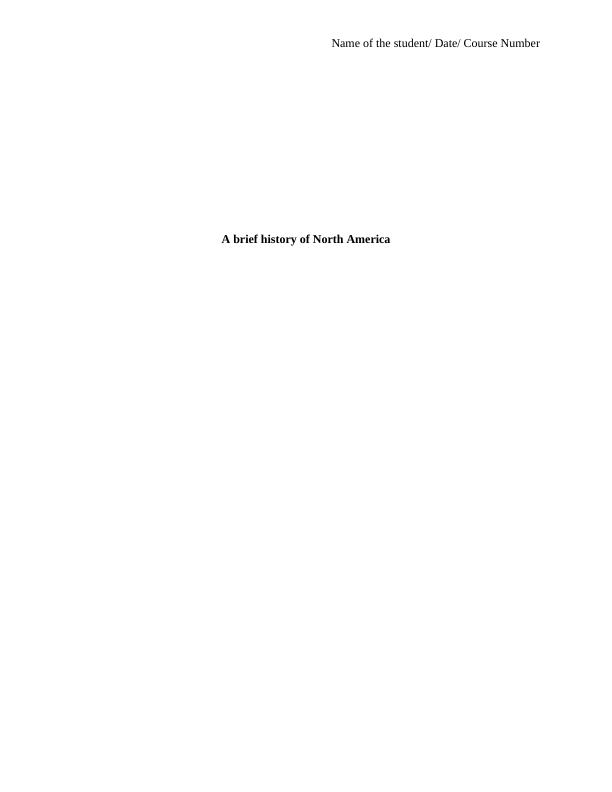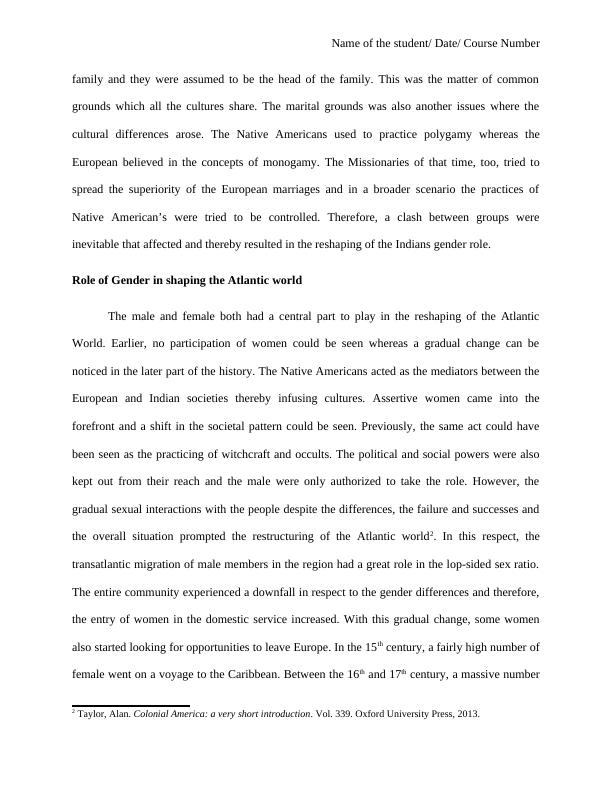Gender Bias in 15th-17th Century North America
Analyze and explain the ways in which ideas about race and gender impacted the colonization of North America in the period from the late-15th century to the mid-18th century. Provide specific examples of how race and gender impacted the interactions among various people.
6 Pages1533 Words88 Views
Added on 2023-01-04
About This Document
This essay analyzes the gender bias that was prevalent in 15th-17th century North America and its impact on societal values, customs, and the reshaping of ideas about femininity.
Gender Bias in 15th-17th Century North America
Analyze and explain the ways in which ideas about race and gender impacted the colonization of North America in the period from the late-15th century to the mid-18th century. Provide specific examples of how race and gender impacted the interactions among various people.
Added on 2023-01-04
ShareRelated Documents
End of preview
Want to access all the pages? Upload your documents or become a member.
The Yellow Wallpaper: A Reflection of Rigid Gender Roles in 19th Century America
|10
|3008
|275
Sociology
|5
|790
|89
Race, Class, and Gender in Precolonial America to Mid 1700s
|5
|974
|320
Essay on the American History
|4
|737
|49
(HIEU 164) - Women Missionaries
|24
|4784
|99
Encounters in Colonial North America Summary 2022
|7
|1687
|23



